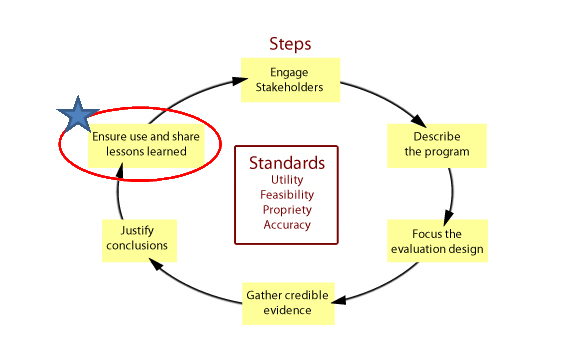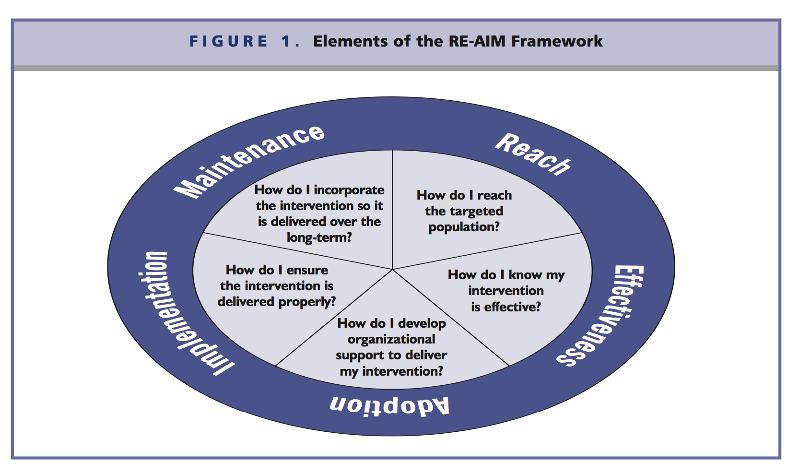Ensure Use and Share Lessons Learned
Now that you have completed your evaluation, you have a wealth of information to share with a broad range of stakeholders. It will be important to consider how best to communicate and disseminate to the various audiences so the findings can be used to inform current and future program activities.

During this step, focus on the following:
- Developing your final recommendations
- Create a dissemination plan
- Prepare your results to share with your various audiences
- Allow time for feedback form stakeholders and follow up
- Disseminate
Develop Final Recommendations
The purpose of this step is to translate your evidence-based results into actionable statements. These may identify ways to improve or adapt the program or highlight a major strength. Recommendations should be grounded in the results but take into account program context. They should also be specific, realistic and targeted.
Create a Dissemination Plan
The next step is how to share these recommendations with your various audiences. Here, you should focus on what information should be conveyed to a given stakeholder and how best to convey it to this audience.
Prepare Results to Share with Various Audiences
This step will depend on your dissemination plan created previously. Here is where you do the work to pull together the data into a way that can be clearly communicated and suggest actionable next steps.
If your evaluation has shown the program is meeting or even exceeding the program objectives, it may be important to consider how such a successful program could be replicated with fidelity. One common practice is to consider or revisit the RE-AIM model.
RE-AIM stands for Reach Effectiveness Adoption Implementation Maintenance.

According to the developers of RE-AIM,
"The hope is that applying and considering this framework post-evaluation, one can increase the quality, rapidity and impact of efforts to bring your new intervention into broader practice."
It may therefore be something to include as you share your evaluation results to explore how it could be adapted to help other individuals.
Allow Time for Feedback From Stakeholders
As you have so far at many stages of your evaluation, it is good to share your initial thoughts with some of your key stakeholders prior to dissemination of the final results. Getting their buy in can be helpful moving forward and allow them to prepare for applying your recommendations.
Disseminate
Here is where you act no your plan and share the final results. Following your dissemination plan and being open to opportunities to follow up after delivery will help to keep the results top of mind in the organization and increase the chances your recommendations have their greatest possible impact on the future of the program.
Ensure Use and Share Lessons Learned Checklist
Source - CDC manual for Health Program
- Identify strategies to increase the likelihood that evaluation findings will be used.
- Identify strategies to reduce the likelihood that information will be misinterpreted.
- Provide continuous feedback to the program.
- Prepare stakeholders for the eventual use of evaluation findings.
- Identify training and technical assistance needs.
- Use evaluation findings to support annual and long-range planning.
- Use evaluation findings to promote your program.
- Use evaluation findings to enhance the public image of your program.
- Schedule follow-up meetings to facilitate the transfer of evaluation conclusions.
- Disseminate procedures used and lessons learned to stakeholders.
- Consider interim reports to key audiences.
- Tailor evaluation reports to audience(s.)
- Revisit the purpose(s) of the evaluation when preparing recommendations.
- Present clear and succinct findings in a timely manner.
- Avoid jargon when preparing or presenting information to stakeholders.
- Disseminate evaluation findings in several ways.

